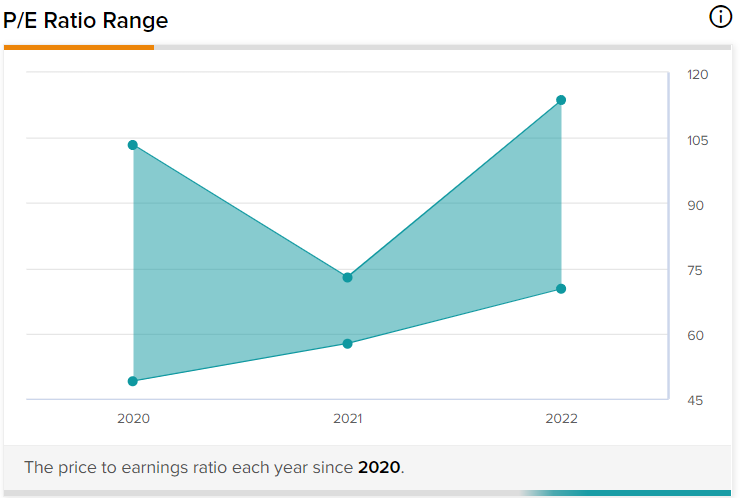This year’s first-quarter 13-F filings revealed that Daniel Loeb’s Third Point LLC reduced its stake in Amazon (AMZN) stock from 235k shares to 17.5k shares. Loeb’s Third Point is one of many institutions that lost interest in Amazon stock during the first quarter. In fact, TipRanks’ hedge fund trading activity tool suggests that 2.9 million Amazon shares were sold by hedge fund managers during the previous quarter, conveying a bearish sentiment among the big hitters.
Claim 70% Off TipRanks This Holiday Season
- Unlock hedge-fund level data and powerful investing tools for smarter, sharper decisions
- Stay ahead of the market with the latest news and analysis and maximize your portfolio's potential

Hedge funds generally specialize in short-term tactical investment strategies. Thus, the recent sell-off suggests that Amazon stock possesses fault lines.
I’m bearish on the stock, given the current market sentiment and a few worrisome idiosyncrasies linked to Amazon stock.
The Market Climate
The financial markets are experiencing what’s called risk-aversion. In theory, this means that investors are opting for safer assets with proven results rather than assets with future growth prospects. Risk-aversion is perfectly normal whenever economic conditions are slowing, as it’s inextricably linked to rising inflation and erosion of real wages.
Furthermore, big technology stocks such as Amazon thrived during the earlier stages of the pandemic as interest rates and inflation were both low. Additionally, technological innovation proliferated during the pandemic, providing a critical tailwind to Amazon stock.
However, the historical oscillation of the stock market suggests that the market has two sides to it, meaning that every bullish period is likely followed by a bearish period. As of now, we’re in a very bearish period for Amazon stock, hence its more than 30% year-to-date drawdown.
Lastly, it’s unlikely that economic conditions and the stock market alike will revert to a growth trajectory anytime soon. There are significant supply-chain concerns due to a slowdown in Chinese industrial production and high freight costs. In addition, inflation in the jobs market is a massive issue for companies as it’s diminishing the intrinsic value of their organizations.
Recent Earnings
Amazon’s first-quarter earnings report conveyed the challenging economic conditions that it’s faced with. The company revealed an earnings miss of $16.05 per share due to rising input costs and losses on its Rivian (RIVN) investment.
Results from the quarter showed that Amazon’s free cash flow decreased 1.97x year-over-year, indicating that the stock’s implied intrinsic value has eroded significantly. To make matters even worse, the firm’s free cash flow would’ve decreased 2.97x if non-cash costs such as depreciation & amortization weren’t overlooked.
Furthermore, Amazon’s net income dropped 20% year-over-year, suggesting that rising input costs are catching up with the firm. The United States has nearly two jobs available for every unemployed person, conveying a tight labor market with unrealistic wage demands. It’s unlikely that high wage demand will subside until inflation finds calm, which is unlikely to happen anytime soon.
The final matter to consider from Amazon’s first-quarter results is its $7.6 billion loss on its Rivian investment. Amazon reportedly owned more than 20% of Rivian, meaning that the stock’s losses were reported as part of Amazon’s income statement.
Amazon’s decision to speculate on Rivian suggests that its real growth has stagnated, prompting the company’s management to make risky bets that could influence the stock’s risk-return profile.
Quantitative Analysis
The stock isn’t in good shape from a quantitative vantage point. First of all, it seems as though Amazon has reached a cyclical peak, with its forward price-earnings ratio being 26.4% higher than its five-year average.

TipRanks’ price/earnings algorithm indicates that Amazon’s current price-earnings (53.2) ratio is still on the lower end of its valuation spectrum. However, this matter needs to be looked at out of isolation. For instance, it’s forecasted that the company’s earnings per share will decrease significantly by the time it reports its second-quarter earnings, subsequently diluting the validity of a low trailing price-earnings ratio.

Furthermore, Amazon doesn’t exhibit good style ratios. For example, the stock’s year-over-year return on equity decrease (-43.46%) coupled with the fact that it’s trading below its 50-, 100-, and 200-day moving averages implies that the stock is in poor shape.
Wall Street’s Take
Turning to Wall Street, Amazon earns a Strong Buy consensus rating based on 36 Buys, one Hold, and one Sell rating assigned in the past three months. The average Amazon stock price target of $3695.95 implies 59.2% upside potential.
The Bottom Line
Amazon stock isn’t in great shape at the moment, hence the recent hedge fund sell-off. The company’s recent earnings miss illustrates the effect of rising input costs and its poor judgment on Rivian stock. Lastly, quantitative metrics and the current market environment don’t align well enough for Amazon stock to perform.
Discover new investment ideas with data you can trust.
Read full Disclaimer & Disclosure
















